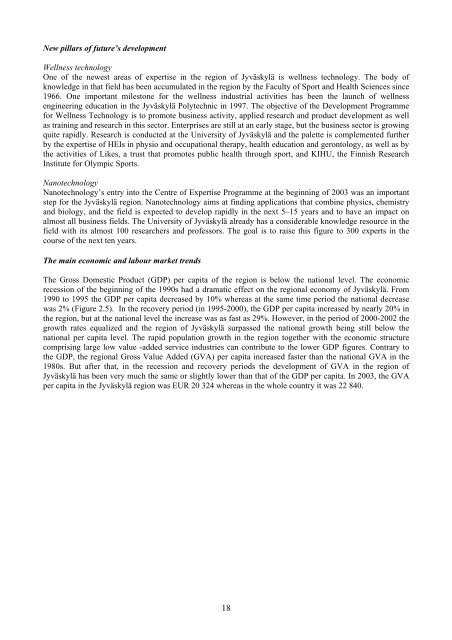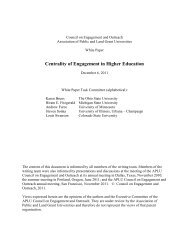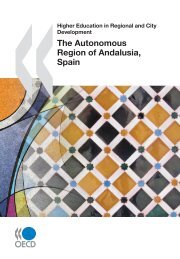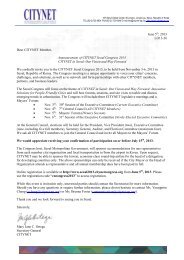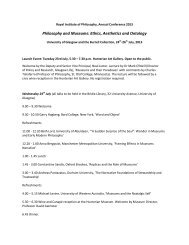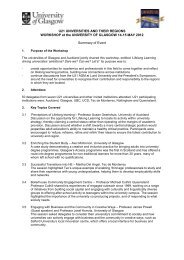Finland - Jyvaskyla Region - Final Self-Evaluation Report.pdf
Finland - Jyvaskyla Region - Final Self-Evaluation Report.pdf
Finland - Jyvaskyla Region - Final Self-Evaluation Report.pdf
You also want an ePaper? Increase the reach of your titles
YUMPU automatically turns print PDFs into web optimized ePapers that Google loves.
New pillars of future’s developmentWellness technologyOne of the newest areas of expertise in the region of Jyväskylä is wellness technology. The body ofknowledge in that field has been accumulated in the region by the Faculty of Sport and Health Sciences since1966. One important milestone for the wellness industrial activities has been the launch of wellnessengineering education in the Jyväskylä Polytechnic in 1997. The objective of the Development Programmefor Wellness Technology is to promote business activity, applied research and product development as wellas training and research in this sector. Enterprises are still at an early stage, but the business sector is growingquite rapidly. Research is conducted at the University of Jyväskylä and the palette is complemented furtherby the expertise of HEIs in physio and occupational therapy, health education and gerontology, as well as bythe activities of Likes, a trust that promotes public health through sport, and KIHU, the Finnish ResearchInstitute for Olympic Sports.NanotechnologyNanotechnology’s entry into the Centre of Expertise Programme at the beginning of 2003 was an importantstep for the Jyväskylä region. Nanotechnology aims at finding applications that combine physics, chemistryand biology, and the field is expected to develop rapidly in the next 5–15 years and to have an impact onalmost all business fields. The University of Jyväskylä already has a considerable knowledge resource in thefield with its almost 100 researchers and professors. The goal is to raise this figure to 300 experts in thecourse of the next ten years.The main economic and labour market trendsThe Gross Domestic Product (GDP) per capita of the region is below the national level. The economicrecession of the beginning of the 1990s had a dramatic effect on the regional economy of Jyväskylä. From1990 to 1995 the GDP per capita decreased by 10% whereas at the same time period the national decreasewas 2% (Figure 2.5). In the recovery period (in 1995-2000), the GDP per capita increased by nearly 20% inthe region, but at the national level the increase was as fast as 29%. However, in the period of 2000-2002 thegrowth rates equalized and the region of Jyväskylä surpassed the national growth being still below thenational per capita level. The rapid population growth in the region together with the economic structurecomprising large low value -added service industries can contribute to the lower GDP figures. Contrary tothe GDP, the regional Gross Value Added (GVA) per capita increased faster than the national GVA in the1980s. But after that, in the recession and recovery periods the development of GVA in the region ofJyväskylä has been very much the same or slightly lower than that of the GDP per capita. In 2003, the GVAper capita in the Jyväskylä region was EUR 20 324 whereas in the whole country it was 22 840.18


